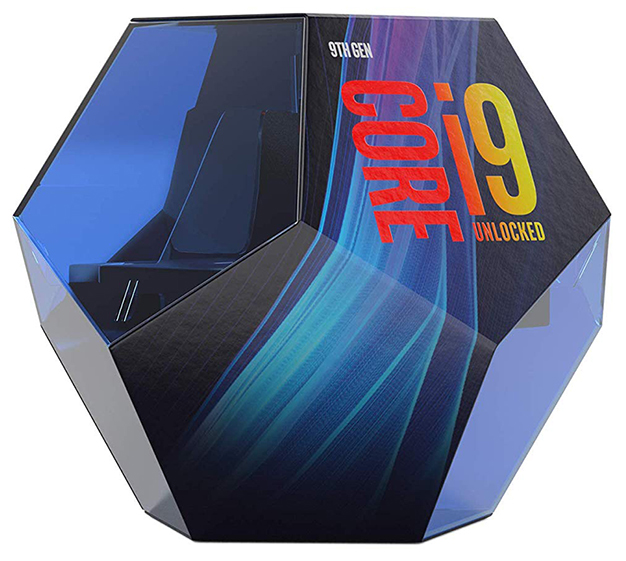AMD Ryzen 9 3900X Vs Intel Core i9-9900K IPC Shootout: Did AMD Close The Gap?
|

In 3DMark's Fire Strike CPU tests for our debut review, AMD had a very slight lead on a core-for-core basis, where the Ryzen 7 3700X surpassed the Core i9-9900K by the smallest of margins. This time around, when clocks are locked, Intel has the per-core lead by less than one frame per second. However, once all 12 cores are running, the tables are turned and AMD's Zen 2-based CPU jumps out to a substantial 20% lead.
The Time Spy CPU test obviously scales with the number of cores. To figure out exactly how well, we'll divide the total frames per second by the number of CPU cores to come up with an "FPS per core" metric. Nobody would buy a Ryzen 9 3900X and use only eight cores, so this is instructive to show how much extra performance that money could buy you, depending on the application, over the eight-core Intel Core i9-9900K.

At the top of the graph, as you'd expect, we find the Core i9-9900K. That CPU won the head-to-head eight-core challenge, so it provides the best result in our FPS-per-core charts, but only barely. What's interesting to us is just how little 3DMark Time Spy's CPU test benefited from four extra cores and eight extra hardware threads. The result was faster overall (by 20% in the total FPS test above), but with diminishing returns on a per-core basis.
|

At 1080p, Shadow of War was an outright win for the Core i9-9900K locked at 4GHz. In fact, it seems we've bumped up against either the game engine's ceiling or a limitation of our graphics card, since 4 GHz was no slower than full speed (if you compare notes in our full Ryzen 9 3900X review). On the other hand, the Ryzen CPU did see a small dip in performance. 12 cores did nothing to help, either. It seems Shadow of War at least has no need for an ultra-wide CPU like the Ryzen 9 3900X.

Because of the apparent lack of need for parallelism, the FPS per Core graph is pretty ugly for AMD. On the other hand, that should mean that Ryzen 9 3900X owners who want to stream their gaming sessions to the world will have the extra CPU resources to spare, in order to do some high-quality encoding while still experiencing silky-smooth gameplay.
 Performance Summary: These Intel and AMD multi-core processors traded blows across all of our CPU tests, but Intel won more often than not. The blue team notched IPC wins in SANDRA's Dhrystone integer tests, Geekbench, POV-Ray, LAME MT, 3DMark, and Middle Earth: Shadow of War. AMD stole single-threaded victories in SANDRA's Whetstone FPU tests, Cinebench, and Y-Cruncher. While not an outright thread-for-thread win for AMD, the company has obviously worked hard to improve 3rd Gen Ryzen performance in lightly-threaded loads, while its multi-core scaling is downright impressive.
Performance Summary: These Intel and AMD multi-core processors traded blows across all of our CPU tests, but Intel won more often than not. The blue team notched IPC wins in SANDRA's Dhrystone integer tests, Geekbench, POV-Ray, LAME MT, 3DMark, and Middle Earth: Shadow of War. AMD stole single-threaded victories in SANDRA's Whetstone FPU tests, Cinebench, and Y-Cruncher. While not an outright thread-for-thread win for AMD, the company has obviously worked hard to improve 3rd Gen Ryzen performance in lightly-threaded loads, while its multi-core scaling is downright impressive. We came into this experiment hoping to learn something about AMD's improvements in instructions-per-cycle (IPC) performance. Our testing bears out that the company has made significant strides in this area. Previously, buying advice was something like, "if you need lots of cores and are pinching pennies, look at AMD Ryzen, but if you need stronger lightly-threaded performance, Intel is king." While Intel still has an overall advantage in low-thread-count situations like the ones we've explored today, the gap has been closed down dramatically. AMD has successfully turned the tables with 3rd Gen Ryzen 3000 series processors that bring a notable IPC lift across the board. You can't go wrong with either Intel or AMD platforms for single-threaded performance, but when you take Ryzen's higher core counts at a given price point into consideration, AMD's new hotness is head-turning and hard to deny.
Editor's Note: In fact, the Ryzen 9 3900X CPU we tested here is so hot right now, that AMD is having a tough time keeping them in stock at its announced MSRP, while online retailers gouge on tight availability. Hopefully, AMD can turn things around on the supply side of things soon too. Meanwhile, Intel's prices on the Core i9-9900K and Core i9-9700K seem to be softening a bit. Regardless, here's to renewed, vigorous competition in the CPU space.








